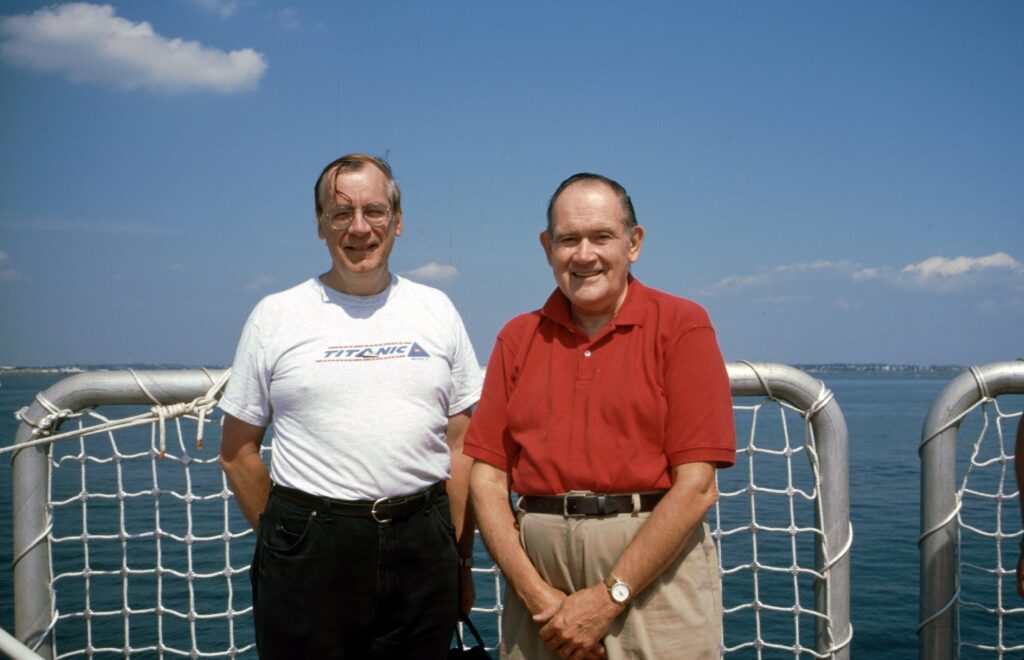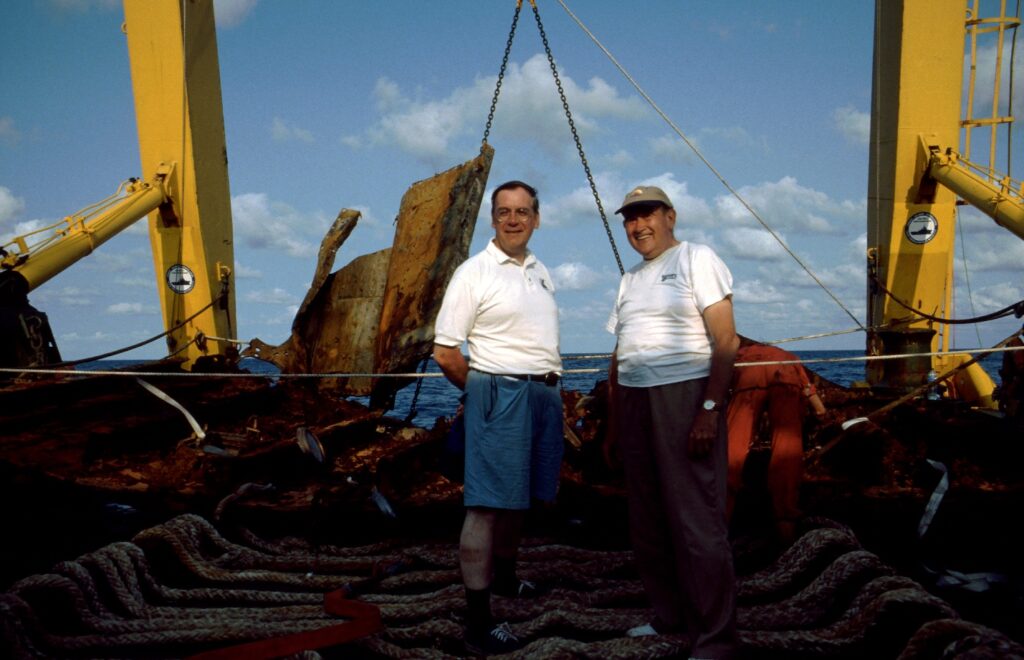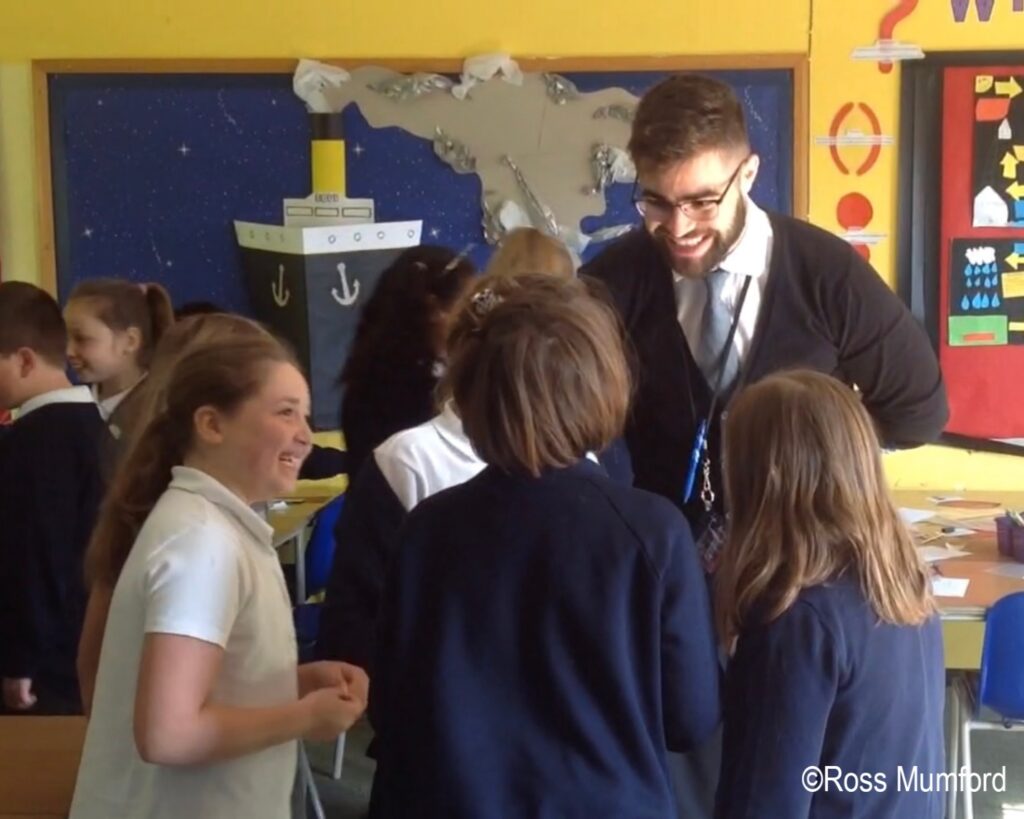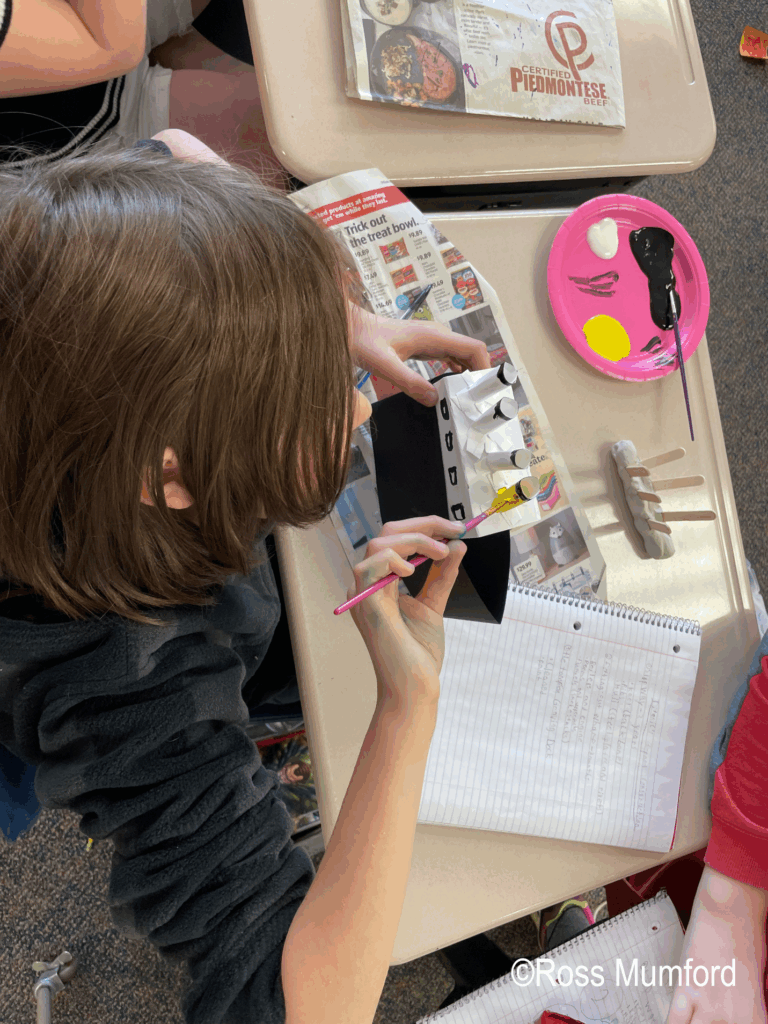Thanks to teachers, Titanic’s story continues to spark curiosity for new generations. Their work gives students the opportunity to engage with history, remember those who sailed on the Ship, and participate in her ongoing legacy as the next generation of explorers. These teachers devote time, energy, creativity, and precious classroom hours; for that, we are grateful. You are integral to her continued remembrance and understanding.
Teaching and Titanic have shared an interwoven history since 1912. From her maiden voyage, when a science teacher on board used his expertise to produce a detailed, scientific eyewitness account, to the late twentieth century, when a renowned English teacher–turned-historian helped transform modern Titanic research, educators have always been part of her legacy. Over the last 15 years, RMS Titanic Inc.’s researcher and content specialist has brought Titanic to hundreds of students worldwide, including his own fourth-grade classroom. The following three individuals represent just a few examples of how Titanic continues to connect to education, linking her story from past to present.
Beesley: Passenger, Survivor, Teacher
When Titanic sailed in April 1912, second-class passenger Lawrence Beesley brought with him not just his luggage but also a teacher’s instinct for observation and precision. A 34-year-old science teacher, Beesley began his career in 1902 at Wirksworth Grammar School after earning First Class Honours in the National Science Tripos at Cambridge University. Shortly after resigning from his post at Dulwich College in London, he boarded Titanic for a holiday in America and a visit with his brother in Toronto. He would become one of Titanic’s most valuable eyewitnesses.
After surviving the disaster, Beesley began writing almost immediately, recording his experience in quiet corners of the saloon and on deck during his time on board the rescue ship Carpathia, determined to preserve the truth before rumor and misinformation took hold. At the urging of the editor of the Boston Herald, Beesley published The Loss of the S.S. Titanic about two months after his arrival in New York. Unlike the sensationalist accounts being prepared by others, some of whom had never even been on board the Ship, Beesley’s narrative was calm, detailed, and analytical. With a teacher’s clarity, he examined the Ship’s list, the timing of events, and the physical experience of the sinking as well as proposing necessary safety reforms. His account remains one of the most respected and widely cited primary sources on the tragedy.
Beesley’s connection to education continued long after the disaster. He later became the headmaster of Normandale Preparatory School for Boys in East Sussex and, by the 1950s, was serving as principal of the Northwood School of Coaching in Middlesex. His dual legacy as both educator and Titanic survivor deepened in 1958 when he served as a technical adviser on the film A Night to Remember, bringing authenticity and insight to a new generation learning the story.
Through both his teaching and writing, Lawrence Beesley ensured that Titanic’s lessons would not be forgotten. Beesley’s book, The Loss of the S.S. Titanic, remains in print today.

Haas: Teacher, Historian, Society
Charles “Charlie” A. Haas has left an important legacy on Titanic scholarship, one deeply rooted in his 35-year career as an English and journalism teacher at Randolph High School in New Jersey. A graduate of the same school, Haas returned to teach there, becoming its first alumnus to do so. His dual passions for education and Titanic shaped a unique career that has inspired generations of students and historians alike.
Haas began researching Titanic in high school, combing through newspaper microfilm and digging into archives. His interest was first sparked by his grandfather, who took him to his office that overlooked New York Harbor and lent him A Night to Remember. That spark grew into a lifelong mission of research and storytelling, even as he balanced full-time teaching. Haas once said his inspiration came from his own ninth-grade social studies teacher: “She demanded excellence … but was compassionate and supportive of her students and encouraged us to expand our horizons…. I would like to think I ‘inherited’ her passion for teaching. I loved teaching for all 35 years of my career.”
While teaching, Haas co-authored five major books on Titanic with historian John “Jack” P. Eaton, including Titanic: Triumph and Tragedy, widely regarded as one of the most comprehensive works on the subject. Their research spanned three continents and uncovered previously unseen documents about the wreck. He joined three RMS Titanic Inc. (RMST) expeditions—1993, 1996, and 1998—becoming the first teacher and historian to do so. He is a founding member, longtime trustee, and current president of the Titanic International Society, founded in 1989, where he also served as editor of its journal, Voyage, for over a decade. With education as a priority, membership is open to anyone of any age as long as they are Titanically curious.
Named Morris County Teacher of the Year and honored multiple times in Who’s Who Among America’s Teachers, Haas has shared Titanic’s story in classrooms, museums, documentaries, lectures, and media around the world. Through his teaching and scholarship, Charlie Haas has helped preserve the memory of Titanic with both rigor and heart.


Mumford: Teacher, Curriculum, Next Generation
Like many, Ross Mumford’s introduction to Titanic came in 1997 with the release of James Cameron’s award-winning film. But in 2012, the centenary year of the sinking, he found a way to merge that interest with his passion for teaching. As an education major at Nebraska Wesleyan University, Mumford became the teaching assistant for the first full-semester university course focused entirely on Titanic, a position he held for two more years. This was thanks to fellow Titanic teacher Sheryl Rinkol, who created and pioneered the course as a professor at the university. Mumford has also developed and implemented his own 5-week Titanic curriculum, led enrichment courses, and given lectures and classroom presentations to students ranging from elementary age to senior citizens. He has conducted almost 20 Titanic classes and has been awarded grants to conduct studies and present research internationally.
When Mumford began teaching fourth grade in a public school, Titanic became a staple in his classroom. Students engaged in hands-on projects, explored primary sources, expressed their connections creatively, and reflected on the story of the Ship of Dreams. Through their learning, they helped carry Titanic’s legacy into the future.
Mumford later joined RMS Titanic Inc. as part of their education team—led by former Director of Education Sheryl Rinkol—before becoming a researcher and content specialist for the Company. There, both Mumford and Rinkol co-created three sets of Titanic classroom curricula, the first comprehensive teaching materials on the subject. These free downloadable guides provide teachers with engaging, accessible resources. Through his passion and curiosity, Mumford continues to connect students with Titanic’s story in meaningful ways.

Teachers and the Next Generation
From 1912 to today, teachers have kept Titanic’s story alive. Her legacy continues to evolve—through artifact discovery, expeditions, and deep-ocean exploration—but it is the teachers who bring this legacy into classrooms and directly inspire new generations. From Beesley to Haas to Mumford and countless others, teachers have always been vital in ensuring Titanic is shared and remembered with accuracy, empathy, and enthusiasm. Thank you, teachers, for making a difference every day.
If you’ve brought Titanic into your classroom, we’d love to hear from you! Share your story and photo for a chance to be featured on our social media platforms. Please send a direct message to RMS Titanic Inc. on Instagram or Facebook. Click on the icon links at the bottom of the page.
And to all the teachers out there: thank you for your continued dedication. You are helping keep Titanic’s legacy forever present.


